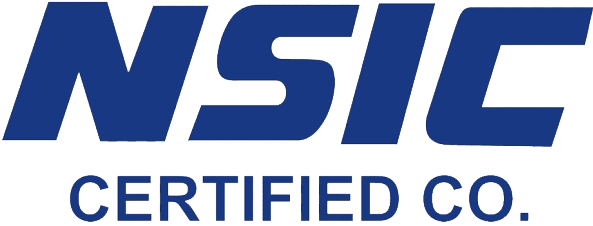Hold on. Movies make casinos glamorous and brutal in equal measure; online casino scenes are often shorthand for risk, mystery and cinematic stakes.
Here’s the practical bit up front: when you see a film scene where a laptop pulls up a “server” and the villain transfers funds with one click, that’s almost always fiction.
In real online casinos the most important invisible guardrail is SSL/TLS — the cryptographic plumbing that protects your username, password and money while it crosses the web.
If you want to know what filmmakers get wrong and what you need to check before you trust a site with your cash, read this: I’ll give you a short checklist, quick comparisons, common mistakes and simple steps to verify SSL security in practice.
Wow. Movies like Ocean’s Eleven or Casino Royale sell the thrill; they rarely show the boring but critical bits like certificate validation, HSTS or KYC checks.
That gloss is understandable — not cinematic. But in plain terms, a polished theme and an actor’s swagger don’t protect your data.
For a beginner, the practical takeaway is this: a beautiful site can still be insecure or predatory. For anyone about to deposit, check the transport security and the regulatory basics first — those are the low-effort, high-return checks that reduce risk immediately.

What films get right — and what they get wrong
Here’s the thing. Films capture psychology accurately: tension, tilt, bluffing and addiction.
They’re usually wrong on the tech. For example, an on-screen “hack” that shows instant decryption, or a server console that authorises payouts with a keystroke, is dramatized.
On the other hand, movies are right that social engineering and human error are often the weakest links; a slick UI won’t save you from a phishing email or a coerced password reset.
Why SSL/TLS matters for real online casinos
Hold on. SSL isn’t a brand feature — it’s the foundation of secure web transactions.
When you browse to an online casino, SSL/TLS does three practical jobs: it encrypts your data (confidentiality), it ensures the site you’re talking to is the site you intend (integrity/authentication), and it prevents outsiders from silently altering traffic (tamper protection).
If any of those fail, you risk credential theft, session hijacking or man-in-the-middle attacks — concrete hazards that movies ignore because they prefer a handshake and a cigarette to a certificate chain.
Simple, verifiable checks you can do in 90 seconds
Hold on. Don’t let the term “certificate” scare you; these checks are repeatable and quick.
- Look for HTTPS and the padlock in the browser address bar. Click it to view certificate details — who issued it, for which domain, and validity dates.
- Verify the certificate issuer is reputable (Let’s Encrypt, DigiCert, Sectigo, GlobalSign, etc.) and that the domain matches exactly (no odd subdomain tricks).
- Check for HSTS (HTTP Strict Transport Security) by searching online or using the browser developer console — it means the site forces HTTPS and reduces downgrade attacks.
- Prefer sites that implement certificate transparency and don’t use self-signed certs.
If any of the above looks off—expired cert, mismatched domain, or a browser warning—pause and don’t proceed with deposits.
Comparison table — SSL/TLS approaches and what they mean for players
| Approach / Feature | Player impact | How to spot it |
|---|---|---|
| Valid commercial CA certificate (e.g., DigiCert) | High trust; browser shows padlock; certificate chains verify identity | Click padlock → Certificate → Issuer name |
| Let’s Encrypt / automated CA | Good security at no cost; auto-renewal limits expired certs | Same padlock check; issuer = Let’s Encrypt |
| Self-signed certificate | Low trust; browser warns; susceptible to MITM | Browser will show a warning or “Not secure” |
| No HTTPS / mixed content | High risk; credentials and payments exposed | Address shows HTTP or padlock with a warning |
| HSTS enabled | Better protection against downgrades; more secure UX | Use security headers checkers or browser devtools |
Where to place the spinsamurais.com link (why context matters)
Hold on. When comparing real casinos, you want to see both UX and security. A reputable site will display badges for encryption, licensing, and fair-play auditors in a visible “About / Security” section. If you’re researching examples to practice your SSL checks, review a casino’s security info and test the padlock on a live session — many modern operators built on SoftSwiss or similar platforms are explicit about TLS and provider audits. For a live example of a themed operator with a visible security and licensing section you can inspect, consider spinsamurais.com as a practical case to explore how a themed casino presents technical and regulatory information.
Mini case: two short examples from practice
Example 1 — The cinematic-looking site: I once tested a glossy casino that used high-production assets but had an expired certificate in the checkout flow. Hold on. That mismatch immediately flagged a probable operational lapse or poor automation; I stopped and emailed support — they renewed the cert within 24 hours, but it shows how appearance can mask risk.
Example 2 — The shady redirect trick: A player reported an “auth” email sending them to a similar-looking domain (one letter swapped). I checked and found a valid cert for the wrong domain — classic typosquat with HTTPS. The padlock was present, but the domain failed the match test. Lesson: verify the exact domain before entering credentials.
Quick Checklist — Do this before depositing
- Verify HTTPS + padlock and certificate issuer (click padlock).
- Confirm the domain exactly matches the casino (no extra characters).
- Scan for HSTS and modern TLS versions (TLS 1.2/1.3 preferred).
- Check for visible licensing details and regulator links (Curaçao, MGA, UKGC, ACMA notes for AU players).
- Confirm payment methods and read withdrawal terms — encryption helps, but slow withdrawals are a separate risk.
- Do KYC early: legitimate operators require ID before withdrawals; that’s normal and expected.
Common Mistakes and How to Avoid Them
- Assuming padlock = perfect safety. Avoid this — verify domain and issuer; the padlock only proves an encrypted channel, not the operator’s fairness.
- Clicking links in marketing emails. Always type the domain or use a bookmark to avoid phishing.
- Ignoring mixed content warnings. If parts of a page load over HTTP, scripts could be intercepted.
- Trusting screenshots or video clips as proof. Screenshots are easy to fake; do live checks instead.
- Overlooking jurisdictional risk. For Australian players, a site blocked or listed by ACMA should trigger caution.
Mini-FAQ (quick answers)
Is a padlock ever fake?
No — browsers won’t display the standard padlock for an invalid cert — but attackers can register lookalike domains and obtain valid certs for them. Always check the full domain and certificate details.
Can I trust a casino just because it shows logos of auditors?
Not automatically. Check the auditor’s site (or public reports) for the casino’s name and audit date. Auditing logos can be copied; verification matters.
What TLS version should I expect?
Prefer sites offering TLS 1.2 or 1.3 and modern ciphers (AEAD). Old protocols like TLS 1.0/1.1 or SSL 3.0 are deprecated and weak.
Does SSL protect me from unfair games?
No. SSL only protects transport. Game fairness depends on RNG audits, provably-fair mechanisms (for crypto games), and regulator oversight.
Practical tools to verify SSL and site health
Hold on. You don’t need to be an infosec pro to run a quick test. Use browser devtools (Security tab) to inspect certificates, or paste the site URL into online scanners like SSL Labs (Qualys) or securityheaders.com to get an easy-to-read grade. These tools report certificate chain issues, protocol support, HSTS policy and common misconfigurations. If you see an “F” or any critical alerts, don’t deposit until resolved.
Regulatory, KYC and Australian-specific notes
For Australian readers: be aware the Interactive Gambling Act restricts certain online casino services. ACMA has acted to block a number of offshore casino sites; if a site is actively blocked in Australia, you lose many consumer protections and should be cautious. Always check licensing statements and, if necessary, the regulator’s public registers. Also, legitimate casinos will request KYC (identity verification) before withdrawals — that’s normal for AML/CTF compliance, and it typically requires ID and proof of address. If you’re told you can’t withdraw until you send sensitive data through insecure channels, that’s a red flag.
18+. Play responsibly. If gambling stops being fun, seek help — in Australia contact GambleAware or Lifeline (13 11 14). Set deposit limits, use self-exclusion tools where available, and never chase losses.
Sources
- https://www.acma.gov.au
- https://cheatsheetseries.owasp.org/cheatsheets/TLS_Cheat_Sheet.html
- https://nvlpubs.nist.gov/nistpubs/SpecialPublications/NIST.SP.800-52r2.pdf
About the Author
{author_name}, iGaming expert. I’ve audited UX/security for operators and played in both regulated and grey markets; my approach is practical — verify, don’t assume, and keep stakes in line with your bankroll.










